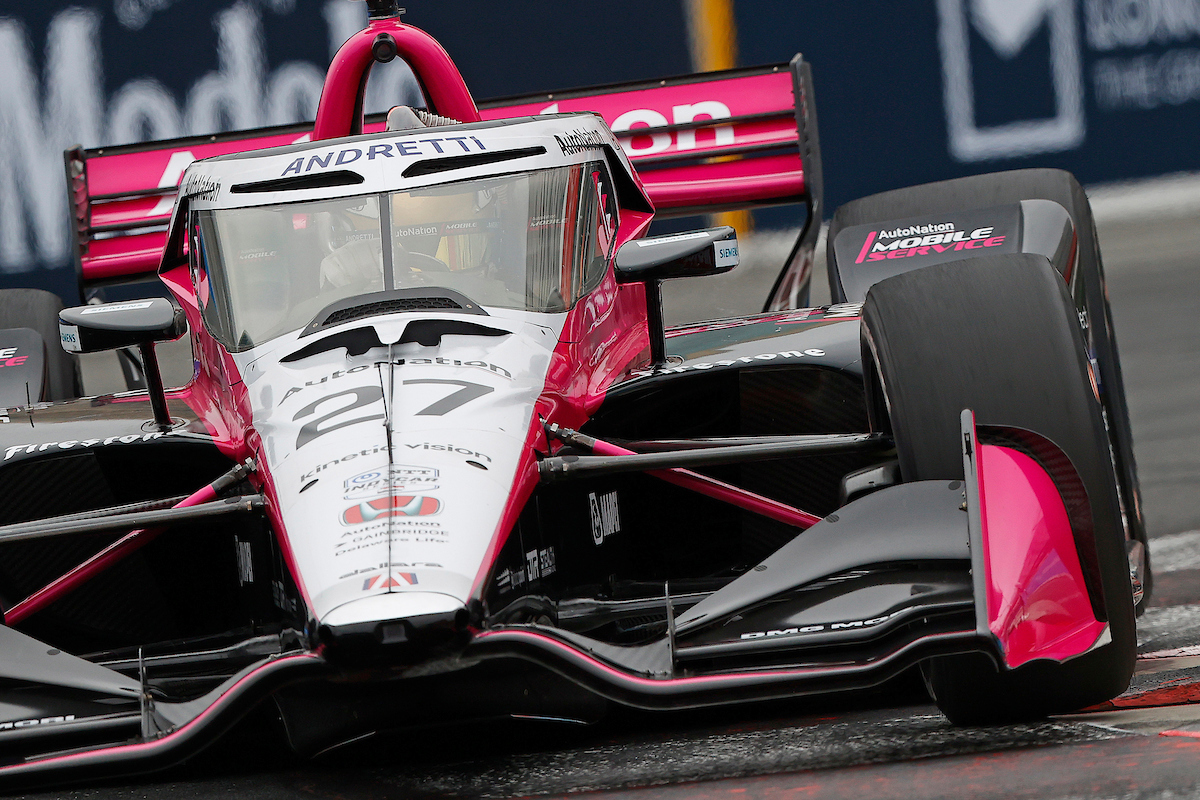If you love the sight of IndyCar drivers fighting oversteer, Friday and Saturday at the Acura Long Beach Grand Prix have been a gift as most of the field has dealt with sideways moments at multiple points on each lap.
The snaps of opposite lock have persisted after the street circuit’s surface improved overnight as rubber was ground into the corners, so what’s causing the constant sawing at the steering wheels?
“It’s not really the track grip, right?” Andretti Global’s Kyle Kirkwood told RACER. “We’re doing the same lap times as what we did last year, if not quicker in qualifying. I think it has to do with the tire. It’s just a stiffer tire in general. They’ve made it more durable and that just causes you to have bigger snaps and it’s less forgiving, in a sense. That’s what it’s mostly due to.”
Turn 8 strikes again!
Trouble for @12WillPower, who makes contact with the wall.
📺: Peacock pic.twitter.com/TEE3PamhKN
— NTT INDYCAR SERIES (@IndyCar) April 20, 2024
Polesitter Felix Rosenqvist also points to the harder Firestone tires—ones designed with higher durability — as the cause of the fun.
With Firestone having made harder tires to cope with the extra weight that was meant to be carried with IndyCar’s new-for-2024 hybrid energy recovery systems that have been delayed until summer, drivers are hustling cars around Long Beach with lighter cars that lack a tire that’s matched to their mass.
“I think also the tires are pretty hard right now for the weight of the car we have because we’re in a bit of a window here where we’re waiting for the hybrid,” Rosenqvist said. “When the tires are cold, it’s a bit icy and it’s easy to lose the rear. I feel like they get there eventually. My steering wheel was upside down out of Turn 5. I guess that’s good for you guys to watch.”
